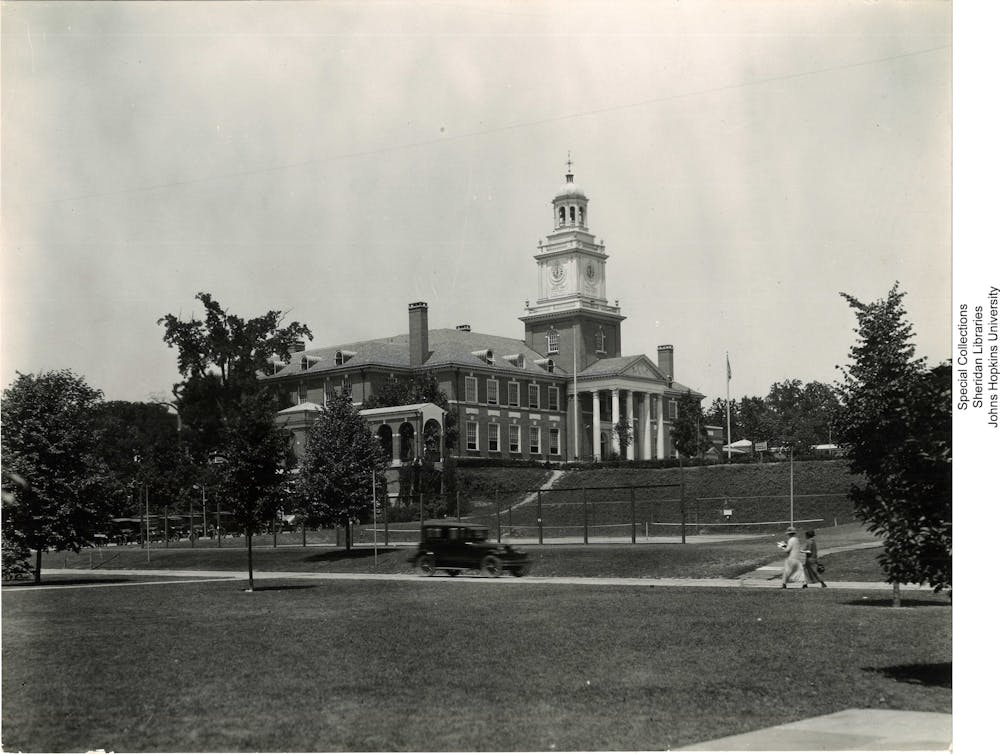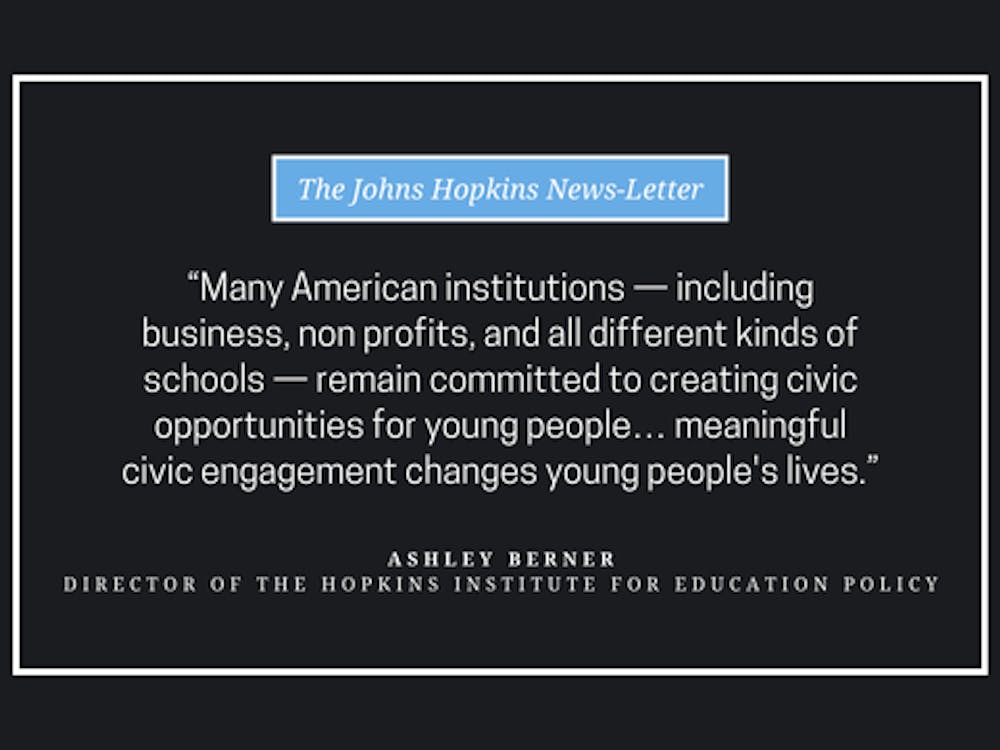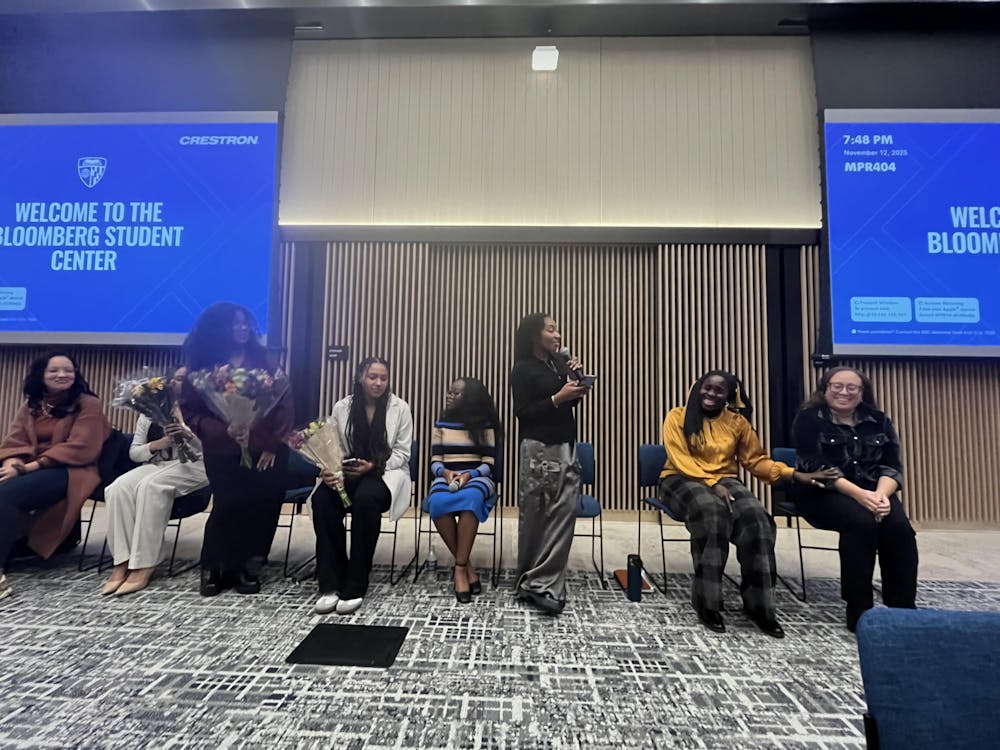In his inaugural address, President Daniel Coit Gilman, the University’s first president, made a statement on what he expects out of the University’s students, stating, “Our simple aim is to make scholars strong, bright, useful, and true.”
With such a promise came an extensive tradition of selective admission into the University.
In the 18th and 19th century, entrance to college was not based on the traditional format we are accustomed to. Universities at the time generally admitted students who completed an entrance examination. Yet, Hopkins adopted a unique method from the beginning.
In an email to The News-Letter, Brooke Shilling from the University’s Special Collections shared the original admissions policies that Hopkins upheld.
“Transcripts and recommendation letters were required from the very beginning (1876) in graduate and undergraduate applications. Preliminary examinations followed by entrance or matriculation examinations in particular subjects (at the time of admission or in the first year) were also among the original requirements for undergraduates,“ she wrote.
Years later in 1975, the Common Application platform was created. Yet, Hopkins featured both the Common App and their own application into the 21st century. A blog post from 2005 indicates that applicants at the time still had the option to use either method. It is believed that Hopkins joined the Common App due to its streamlined methodology, and with this decision came an abundance of application materials including essays, test scores, extracurricular activities and awards, transcripts, and teacher recommendations.
Then, in 2020, the college admissions landscape was altered due to the COVID-19 pandemic. The worldwide pause brought a revolutionary change at the time in the form of test-optional applications. Once the pandemic subsided, what was expected to be a complete immediate reversal back to test-required admissions never occurred. As schools continued their test-optional policies throughout the early 2020s, some simultaneously conducted research on the benefits and pitfalls of this admissions practice.
Chair of Economics and Professor John Friedman at Brown University concluded that students with higher test scores — and therefore, those who reported a score on their application — received higher grades during their education at Brown. According to his study, the data does not support that test scores are inflated for students who come from well-resourced backgrounds. In an interview with The Brown Daily Herald, Friedman summarized his study, saying that standardized test scores “may have more value for admissions processes than previously understood.”
The University itself also conducted research on the situation. Hopkins concluded that, in the three years of their test-optional policy, test scores were predictive of a student’s academic success at the University. In a more unique light, they also found that implementing a test-optional policy might have prevented applicants from disadvantaged areas from submitting test scores that would have provided a positive sign of their academic success. In Aug. 2024, the University announced that standardized testing would once again required for admissions.
In an interview with The News-Letter, Ellen Chow, Dean of Undergraduate Admissions, shared her thoughts on the University’s long-standing policies and the present-day admissions landscape.
“Admissions requirements at Hopkins have been generally similar for several decades. Under our comprehensive, holistic review, we care especially about a prospective student’s performance in high school academic courses and contributions in and out of the classroom that demonstrate intellectual curiosity and leadership potential,” she stated. “One major change from the 20th century is that we no longer give legacy preferences in admissions. Hopkins ended that practice in 2014 as part of our commitment to creating opportunity for students from every walk of life.
Another change in admissions came in 2018 when Hopkins alumni Michael Bloomberg contributed $1.8 billion. Bloomberg’s donation allowed for Hopkins to be permanently need-blind in admissions, meaning students are admitted without consideration of their financial status, as well as have no-loans in their financial aid packages.
In addition, Chow mentioned how the process of reading applications has changed since the 1990s.
“In the 1990s, we only had paper applications, which meant weeks of opening mail, creating paper files and lugging piles of them back and forth to read and discuss as a committee. Today everything is done online. It’s the same for decisions,“ she explained. “We used to mail hard copies of decisions to students’ homes. Now, it’s all instantaneous. On decision day, students log on and learn about decisions as soon as they are released at the designated time.”
In recent years, rankings, such as one from the U.S. News & World Report, have influenced how both applicants and admissions offices approach the entire application process.
Chow indicated that at Hopkins, rankings do not influence the usual procedures: a comprehensive and holistic review that identifies applicants who will thrive in the Blue Jay community. Such an intensive admissions process in the fall means extensive preparation in the summer months. According to Chow, the staff creates a multi-week training schedule for both recruiting students and then evaluating applicants once they submit their applications. The training includes an up-to-date understanding of programs and courses at Hopkins and a review of federal law to ensure compliance with changes such as the 2023 U.S. Supreme Court decision that reversed affirmative action.
Regarding the Supreme Court decision, Chow shared how the decision has impacted applications through the lens of an admissions office.
“Though the law regarding affirmative action in admissions has changed from Bakke through the present, our office has at all times remained in compliance with the law. We closely follow and comply with the law,” she stated. “Following the U.S. Supreme Court’s decision in Students for Fair Admissions, we modified our processes, policies and procedures, and carefully trained admissions staff.”
Following the Supreme Court decision ending affirmative action, the percentage of students from under-represented backgrounds at Hopkins has changed significantly. For the Class of 2028, the percentage of incoming Black students decreased from 13.8% to 5.7%. The percentage of incoming students identifying as Hispanic or Latino dropped from 20.8% to 10.7% in the first admissions cycle following the end of affirmative action. Broadly, the percentage of incoming students who identified with underrepresented groups dropped from 37% in 2023 to 17.6% in 2024.
Chow continued by underscoring that the University’s rise in rankings was a result of the academic success of the student body.
“Our rise in the rankings — from No. 15 in [the] U.S. News in 2009 to No. 6 today — corresponds to a rise in the academic qualifications of our admitted students,” Chow emphasized. “Since 2019, Hopkins has consistently admitted one of the top three most academically competitive classes in the country.”





